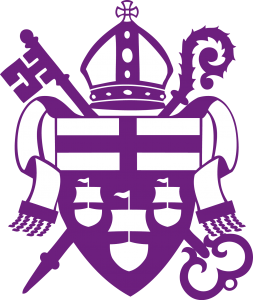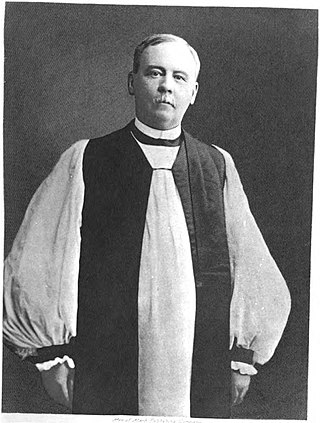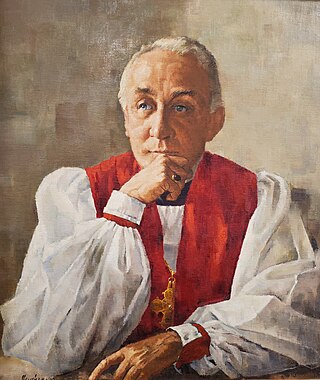Henry Nutt Parsley, Jr. is an American prelate of the Episcopal Church and the retired tenth Bishop of Alabama, and the former Provisional Bishop of the Diocese of Easton. Parsley is also a former Chancellor of the University of the South in Sewanee, Tennessee. He now resides in Wilmington, North Carolina and attends St. James Parish in Wilmington.

The Diocese of Virginia is the second largest diocese of the Episcopal Church in the United States of America, encompassing 38 counties in the northern and central parts of the state of Virginia. The diocese was organized in 1785 and is one of the Episcopal Church's nine original dioceses, with origins in colonial Virginia. As of 2018, the diocese has 16 regions with 68,902 members and 180 congregations.

The Episcopal Diocese of Oklahoma dates back to 1837 as a Missionary District of the Episcopal Church in the United States of America. The General Convention of the Episcopal Church recognized the Diocese of Oklahoma in 1937. The diocese consists of all Episcopal congregations in the state of Oklahoma. The ninth Bishop and sixth diocesan Bishop is Poulson C. Reed, consecrated in 2020.

Campbell Gray was an American bishop of the Episcopal Church. He was the second Bishop of Northern Indiana.

Eugene Taylor Sutton is an American Episcopal clergyman who served as the 14th Episcopal Bishop of Maryland.

Scott Field Bailey was the 6th diocesan bishop of the Episcopal Diocese of West Texas in the Episcopal Church.

Robert Atkinson Gibson was the sixth Episcopal bishop of Virginia.

Shannon Sherwood Johnston is a bishop of The Episcopal Church who was the 13th bishop of the Episcopal Diocese of Virginia.
Don Adger Wimberly was chancellor of the University of the South in Sewanee from 1997 to 2003. He also served as Bishop of Lexington and then Bishop of Texas in The Episcopal Church.

Lyman Cunningham Ogilby was an Episcopal priest who became a missionary bishop in the Philippines, coadjutor bishop in the Episcopal Diocese of South Dakota and later the Episcopal Diocese of Pennsylvania, where he succeeded Bishop Robert L. DeWitt and became the 13th diocesan bishop until his retirement.
Brice Sidney Sanders was sixth bishop of the Episcopal Diocese of East Carolina between 1983 till 1997.

Thomas Augustus Fraser Jr. was eighth bishop of the Episcopal Diocese of North Carolina from 1965 to 1983.
George Phelps Mellick Belshaw was the ninth bishop of the Episcopal Diocese of New Jersey, serving from 1983 to 1994.

John Vander Horst was bishop of the Episcopal Diocese of Tennessee from 1961 to 1977.
Charles Francis Boynton was bishop of the Episcopal Diocese of Puerto Rico, serving from 1947 to 1951. He served later as a suffragan bishop of the Episcopal Diocese of New York from 1951 to 1969. In 1990 he joined the Anglican Catholic Church.
Robert Campbell Witcher Sr. was the sixth bishop of the Episcopal Diocese of Long Island, serving from 1977 to 1991.
William George Burrill was sixth bishop of the Episcopal Diocese of Rochester, serving from 1984 to 1999.

Joseph Gillespie Armstrong was an American suffragan bishop of the Episcopal Diocese of Pennsylvania from 1949 until November 7, 1960, when he was elected coadjutor. He succeeded Rt. Rev. Oliver J. Hart as Bishop of Pennsylvania when Bishop Hart retired on July 19, 1963. However Bishop Armstrong's diocesan episcopate only lasted nine months before his death.
Robert Whitridge Estill was an American prelate who served as the ninth Bishop of North Carolina from 1983 till 1994.
William Matthew Merrick Thomas was an American missionary bishop of the diocese which eventually became the Anglican Episcopal Church of Brazil.











